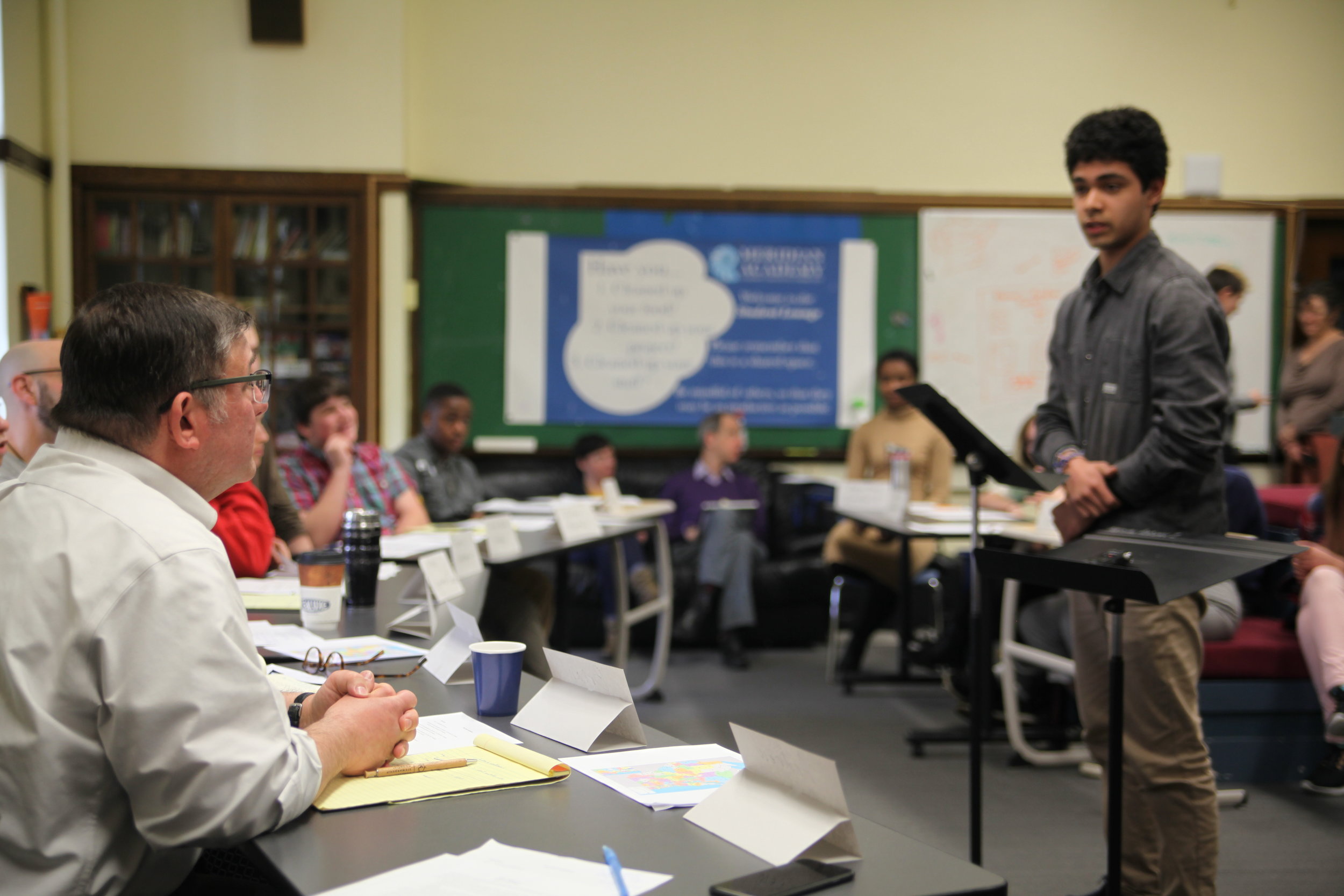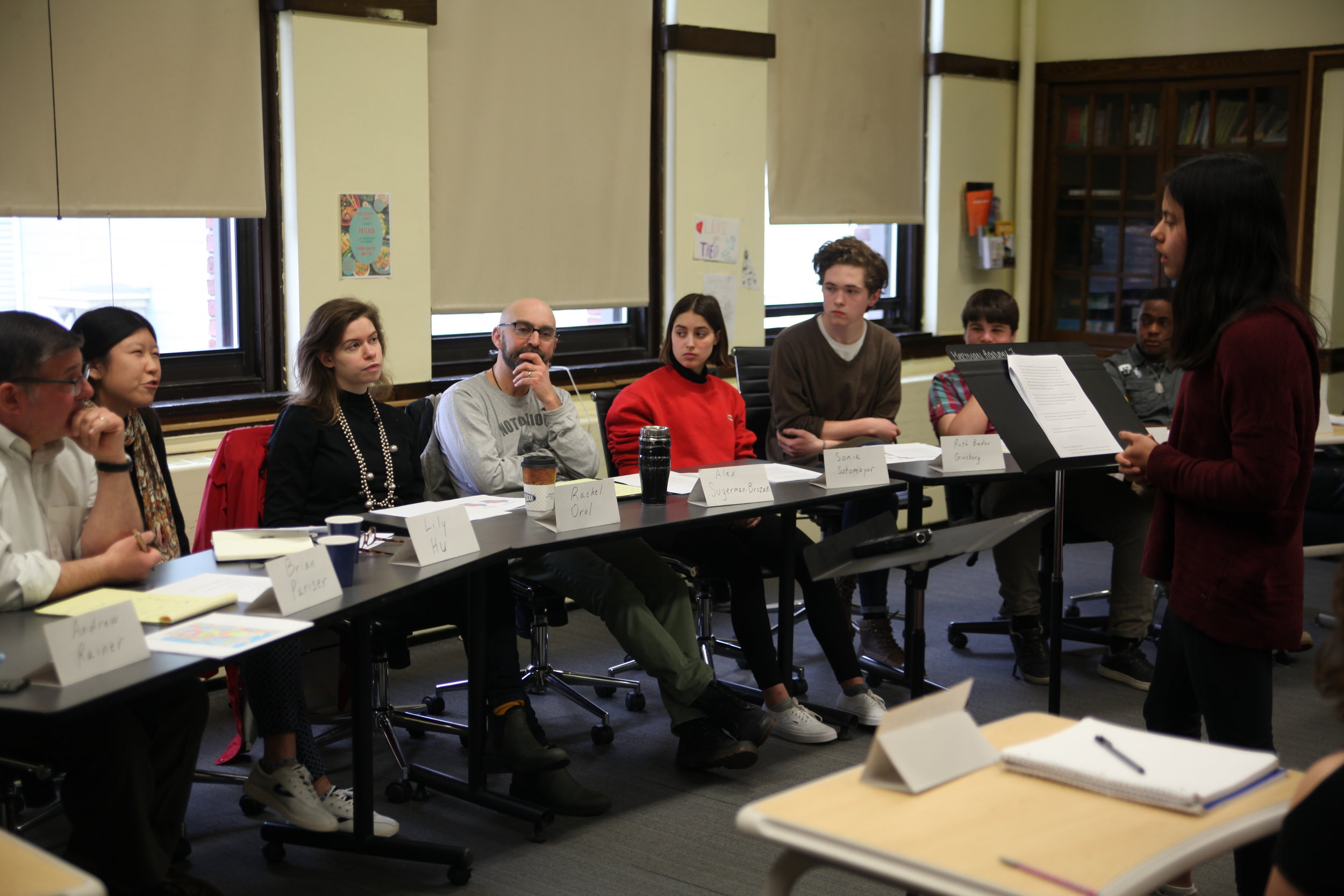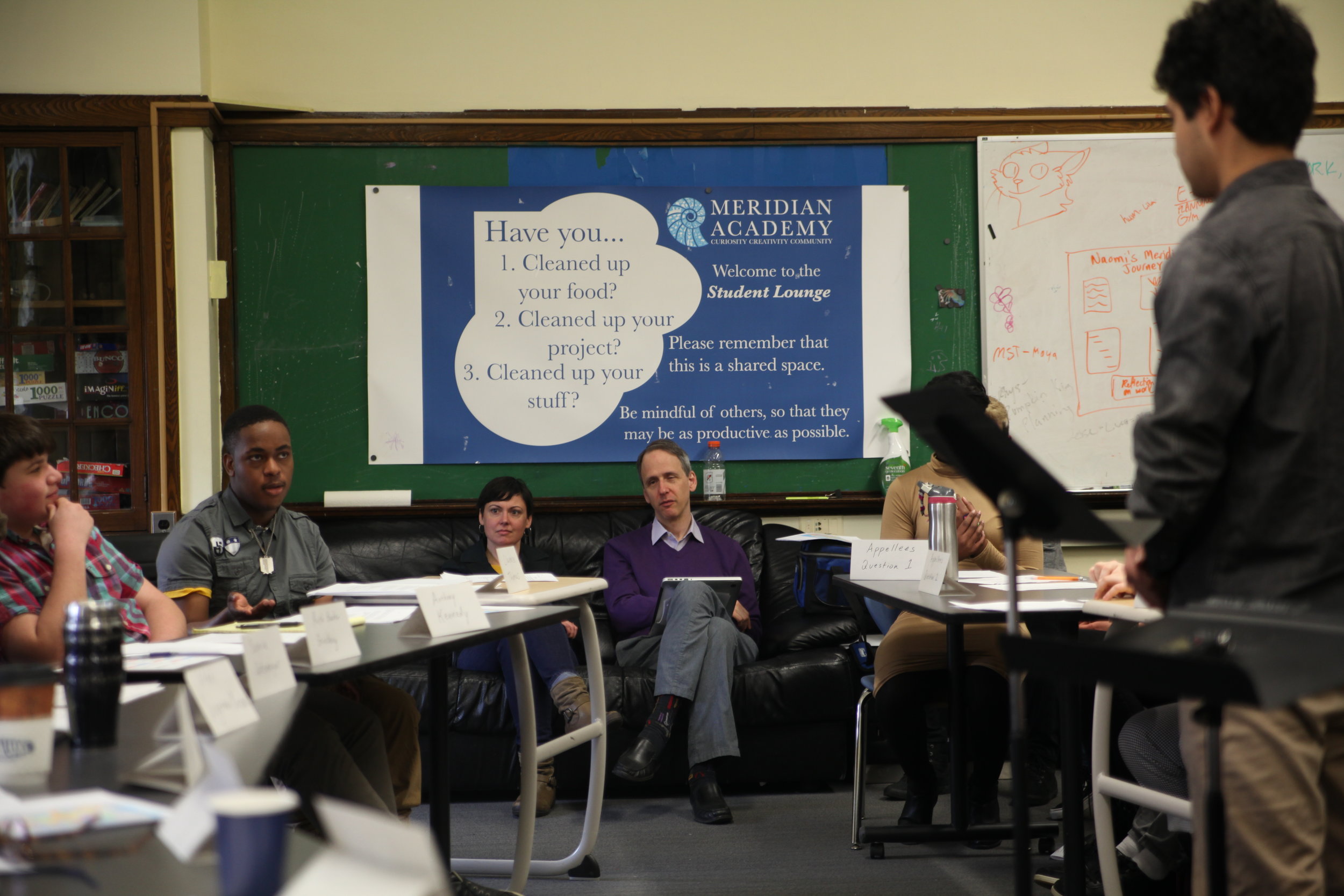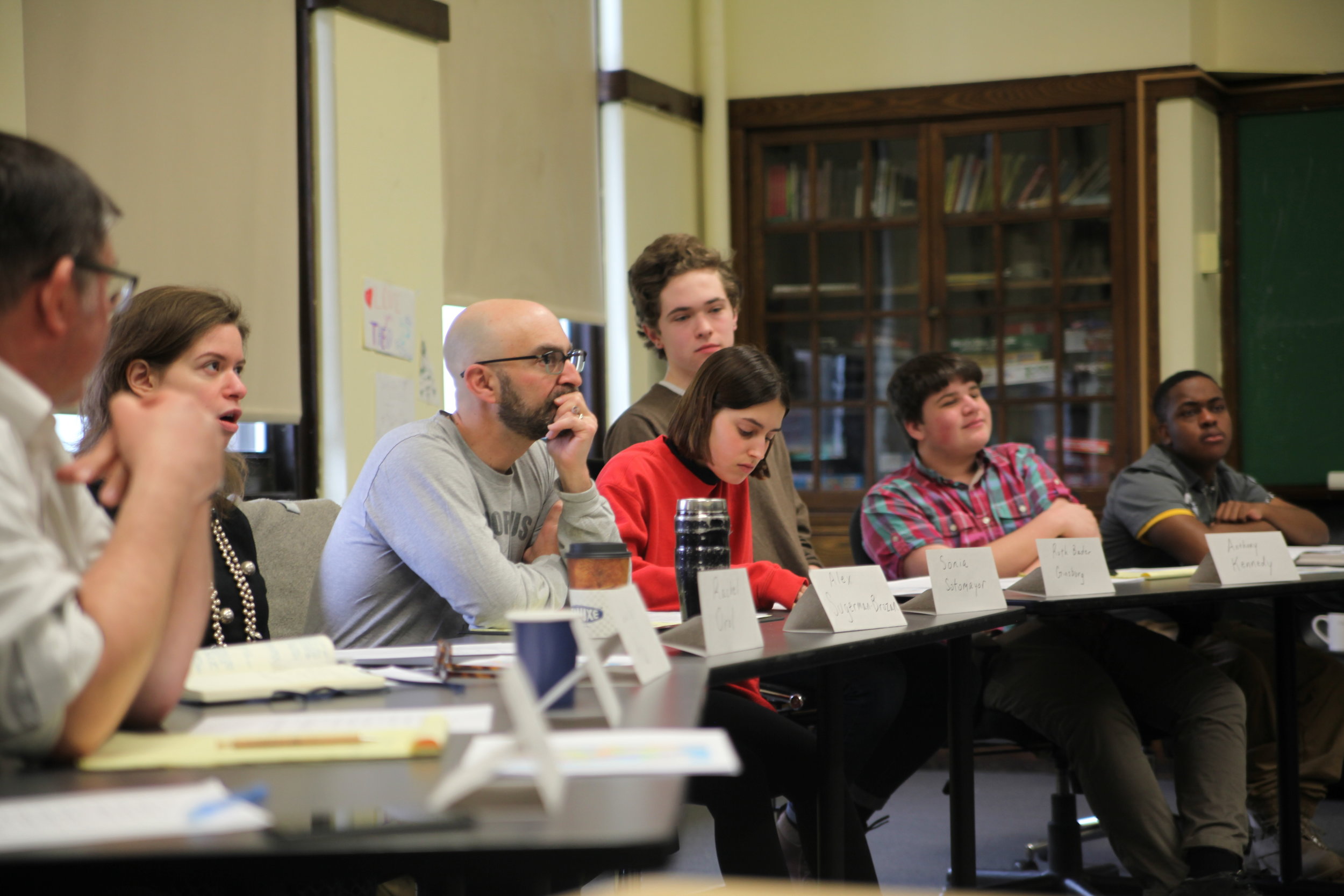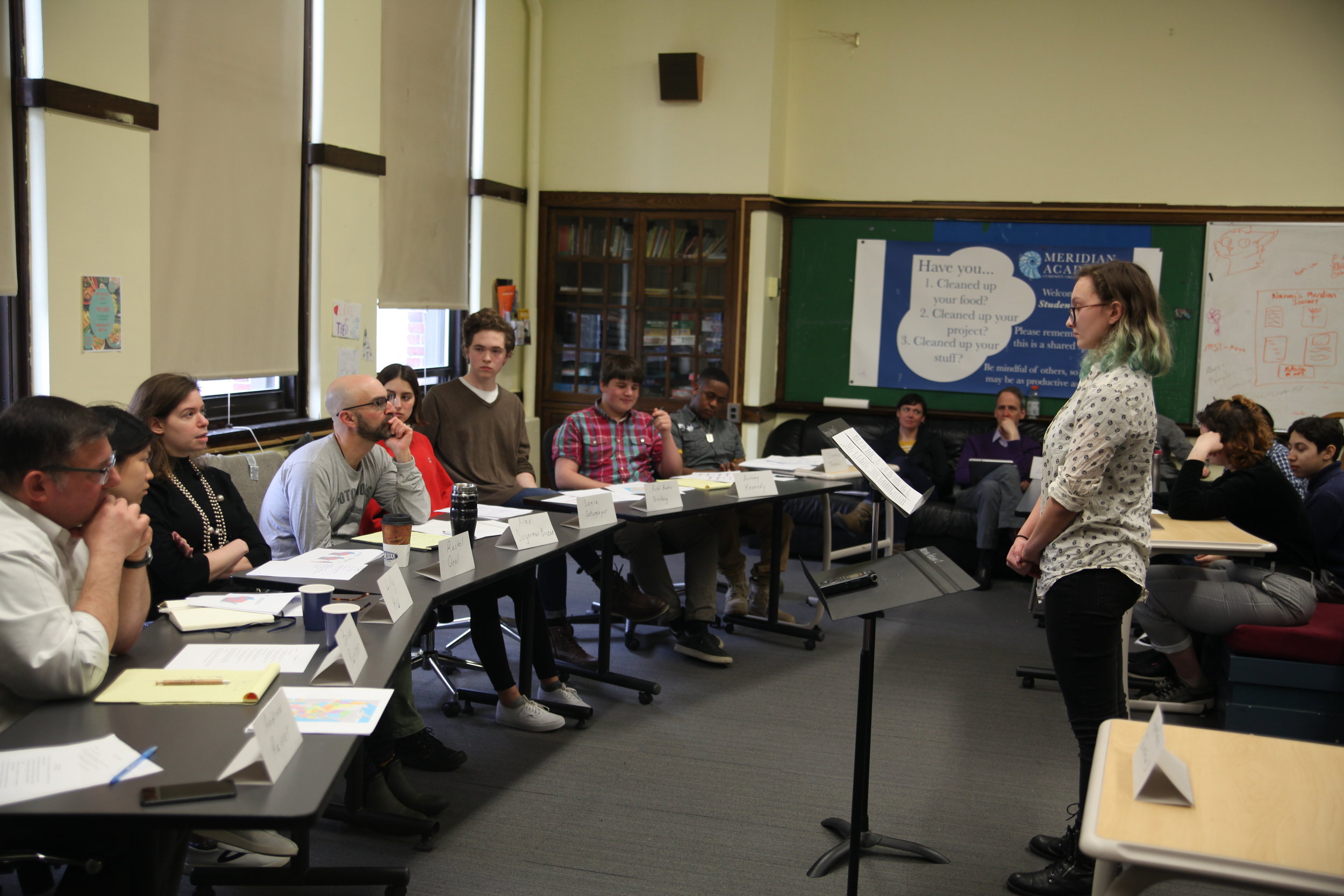Should Politicians Be Able to Gerrymander Their Way to Success?
9th grade students Nadia and Tali reflect on a recent project that combined Humanities with Math, Science, and Technology.
Throughout American history, we have seen minority groups fight for their right to vote. Voting has long been considered a symbol of American freedom, and it is a right that our nation has always valued. However, what happens when someone’s vote no longer has an impact? If some voters have more power than others, does this violate the Constitution?
This April, Division Three explored the ways in which gerrymandering affects state representative elections, and considered ways that gerrymandering can be measured and prevented. Using statistics, geometry, and social science, the class learned about how gerrymandering impacts voters, and how we might determine whether or not a district is unfairly gerrymandered. This unit culminated in a simulation of the oral argument of Gill v. Whitford, a case about gerrymandering in the state of Wisconsin, which is currently being decided by the Supreme Court. The Court is expected to release its decision in June.
Gerrymandering is a strategy that is used by politicians when redrawing the district lines to create less competition within a district. By creating districts of their choice, politicians can essentially choose their voters and ensure victory. Michael Mitchell, a law student at Harvard Law School, states that gerrymandering “prevents voters from voting out people they don’t like and voting in people they do,” a fundamental aspect of our democracy. Some gerrymandering, however, may be unavoidable. Mitchell will be doing an internship at Protect Democracy, an organization which prevents changes in elections which put a group at a disadvantage.
Gerrymandering works by squeezing voters of the opposing party into a district, a practice known as “packing,” or distributing their votes across many districts, which is called “cracking.” By doing so, politicians can weaken the strength of the opposing side, rendering those votes useless. Sometimes, one party can receive less than the majority of the vote, yet receive the majority of seats. In these cases, many voters believe that their right to vote has been stripped away by gerrymandering. Gerrymandering can be seen as a violation of the Constitution’s First and Fourteenth Amendments.
Lily Hu is a Harvard graduate student in applied mathematics at Harvard University. She uses math to figure out if a district has been gerrymandered, and explores ways that math can help create fair district lines. Hu describes three ways one can detect if a district has been gerrymandered. These three ways are: the ratio of perimeter to area, minimum convex, and district curvature. These metrics can help us determine how compact a district is: for example, if a district has many curves, this may mean that it has been gerrymandered.
It is worth noting, Hu points out, that gerrymandering is not the only practice that takes away voters’ rights. Current voter ID laws and mass incarceration restricts minorities, specifically African-Americans, from voting. For example, 59 percent of people who are in jail are either Hispanic or black. Americans in prison are not allowed to vote, meaning that a lot of African-Americans and Hispanics are not allowed to participate in the voting process.
In Gill v. Whitford, Whitford and other Wisconsin voters accused Gill and other Republican map-drawers of unconstitutionally gerrymandering Wisconsin. In 2012, Republicans won a disproportionate amount of assembly seats in comparison to their statewide vote. Republicans had 48.6% of the statewide vote, but received 60 out of the 99 alloted seats in the state assembly. Furthermore, in 2014, they received 52% of the statewide vote and received 63 assembly seats. Wisconsin Democrats claimed that this huge win was due to gerrymandering. In Gill v. Whitford, the plaintiffs argue that what Wisconsin Republicans have done is unconstitutional, and violates their freedom of association and their right to vote. When the case was heard before the district court, the panel decided that the map discriminated against Democratic voters. The defendants appealed and the case went to the Supreme Court (Mangat and Wagner).
The defendants in this case argue that gerrymandering is nonjusticiable. They claim that there is no objective way to measure if a district has been gerrymandered. The defendants also cite the Supreme Court’s precedent, as the Court has rejected partisan gerrymandering claims for the past three decades. The plaintiffs’ case relies on a three-prong test to prove the existence of partisan gerrymandering: discriminatory intent, discriminatory effect, and lack of justification. Two of these have also been rejected in previous gerrymandering cases. Gill refers to the metrics that the plaintiffs have provided as “social science hodgepodge.” There have been a variety of statistical tests to try to make prosecuting against gerrymandering justiciable. One of these is the efficiency gap, which measures the difference in wasted votes between two parties in an election. Gill claims that the efficiency gap test does not work, as it is biased in favor of Democrats, since Democrats tend to live in cities, meaning that they live closer together and are thus naturally “gerrymandered.” Gill also claims that Wisconsin follows traditional redistricting laws. This means that partisan gerrymandering is legal (Mangat and Wagner). The defendants also argue that the tests such as the efficiency gap operate under a dangerous assumption: that voters never deviate from their party, and will always vote for their party (Mangat and Wagner).
In contrast, voters in Wisconsin claim that Republican map-drawers have taken away their rights. In particular, the map in question, also called Act 43, violates the First Amendment, which gives the citizens freedom of association. Whitford claims that this right is stripped away from the voters; because they favor the Democratic party, they have been placed in a certain district in which their votes have no value. This is called vote dilution. Voters claim that their freedom of association has been violated, because the gerrymandered districts has severely devalued their votes (Mangat and Wagner). This also ties in with the Fourteenth Amendment, which grants all citizens the equal protection of the laws.
Gerrymandering is not a recent issue; the United States has been struggling to figure out how to deal with gerrymandering in a responsible way for over two centuries.
The first politician who was accused of gerrymandering was Elbridge Gerry in 1812. The term gerrymandering comes from Gerry, a political cartoon showed how the gerrymandered district resembled a salamander. The portmanteau “gerrymander” resulted, In 1842, the Apportionment Act was passed, stating that congressional districts shall be compact and contiguous. This prevented districts from having holes in them, or having a lot of curves. Additionally, prior to 1842, congressional representative elections were at large. This means that a voter would vote for a party, and a state was ultimately represented by all-Republican or all-Democratic representatives. This meant that voters could look at candidates instead of always voting for their party. It also creates more competition and diversity of thought throughout a state. The Voting Rights Act of 1965 encouraged politicians to create majority minority districts, which is also known as affirmative gerrymandering. This was because previously, some conservative states gerrymandered so that minorities would not get a Democratic representative. They would do this by diluting minorities into districts which were conservative, creating a landslide victory. The Voting Rights Act served as a check for states that discriminated against minority voters (Barasch).
For the past several decades, the Supreme Court has decided that partisan gerrymandering is a political, and not a legal, issue. However, if the Court upholds the district court’s decision, it will mean the system could potentially change. On one hand, it may mean that politicians who draw districts will no longer be able to get away with gerrymandering. On the other hand, this decision may also grant federal courts an incredible amount of power. In future gerrymandering cases, the courts may have to decide what districts are “too gerrymandered” or “not gerrymandered enough,” which may determine the political outcomes of elections. Mitchell believes that there is a lot at stake in Gill v Whitford; if the court rules in favor of Whitford, he believes it could have serious implications for what the Supreme Court is or is not allowed to do. He believes that the court should rule in favor of the plaintiff, because this affirms that our votes matter in our democracy. Since the case violates the First Amendment, it is the court’s job to decide on our standard for gerrymandering.
During Division Three’s oral argument, the atmosphere in the “courtroom” was very tense. The justices, composed of both students and adults, sat in a row, facing the appellees and appellants. When it was each side’s turn to talk, the student-lawyer would go to the middle of the room and stand by a podium. After delivering their speech, the justices asked questions. During the argument, the students fidgeted in their seats, and the tone of their voices were sometimes sharp. The justices asked clarifying and probing questions that put the student-lawyers on the spot. The appellants and appellees were forced to defend their arguments to surprising questions that, at times, caught them off guard. In the end, the justices voted 5-4 to affirm the district court's opinion.
After finishing the mock trial, we observed that the outcome was similar to the outcome of the district court: A 5 to 4 decision. The debate brought up many unresolved questions for the justices. One stood out: Is it the court’s job or the legislature’s job to create a standard for gerrymandering? During the simulation, some justices argued that “I’ll know it when I see it” was a good enough standard. They believed that Act 43 was definitely gerrymandered, so a standard wasn’t needed. Other justices argued that a standard was necessary before gerrymandering was justiciable. Some argued that it was the legislature's job to create a standard. Others countered this, saying that the legislators had been gerrymandered into office, so it should be the job of the justices. The justices never came to a unanimous conclusion, thus proving that these decisions are more complicated than we first believed.
Works Cited
Barasch, Emily. “The Twisted History of Gerrymandering in American Politics.” The Atlantic. 9/19/2012. Web. 3/25/2018.
Bazelon, Emily,”The New Front in Gerrymandering Wars: Democracy vs Math” Aug. 29. 2018.
Mangat, Leonardo and Wagner, D.E. “Beverly R. Gill, et al. v. William Whitford, et al.” Cornell Law School. N.d. Web. 3/27/2018.

